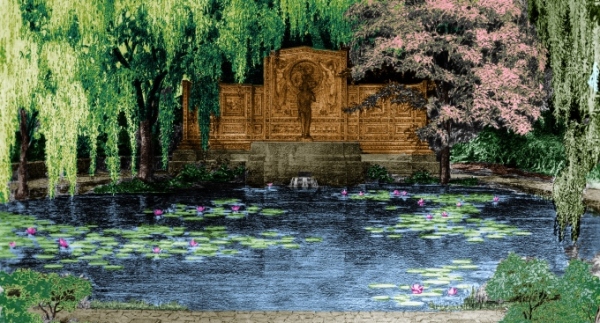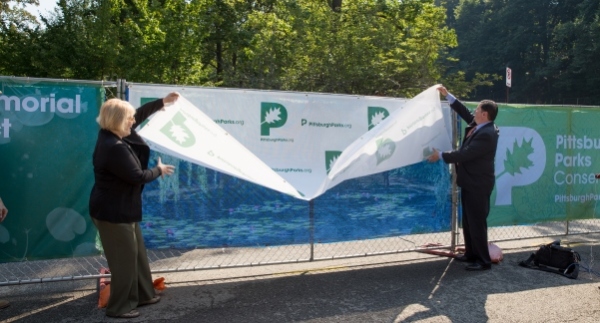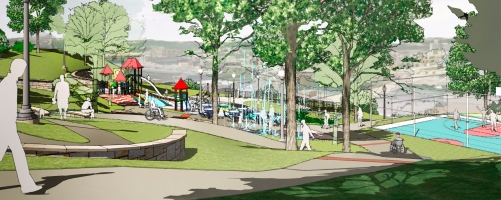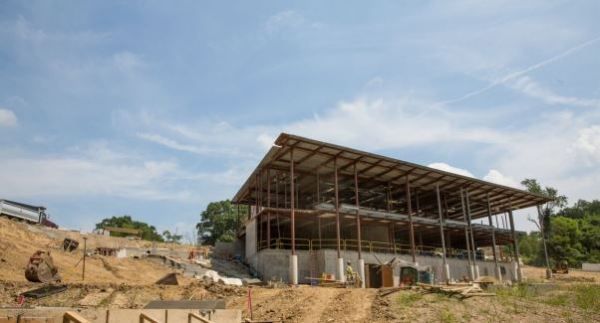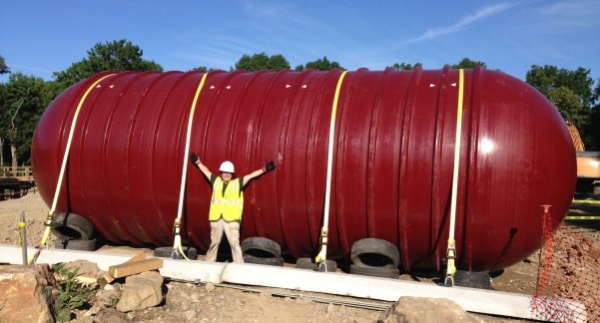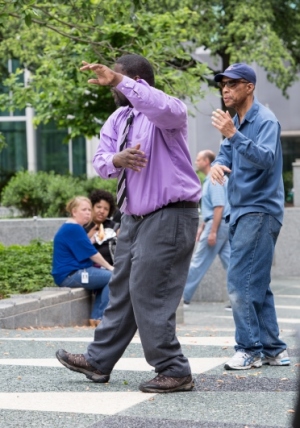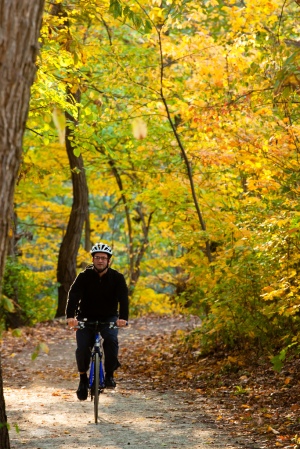Whether you’re celebrating your Valentine, Galentine, or really anyone that you enjoy, we’ve compiled a list of date ideas — platonic or romantic! — that will knock your next park adventure, well, out of the park:
1. Catch sunset at the Highland Park Reservoir
The Overlook at Schenley Park is a fan favorite for sunset spotters. Take a stroll around the Highland Park Reservoir, though, to see the sun set betwixt trees and the Giuseppe Moretti entrance statues in the peaceful entrance garden.

2. Ride a bicycle built for two on Pocusset Street
Don’t have the balance to reenact that timeless Butch Cassidy and the Sundance Kid scene with your sweetie? Riding a tandem bicycle (or any bike, really) down the biker- and walker-only Pocusset Street in Schenley Park is the next best thing.

Knock, knock!
3. Hunt for fairy doors
In Frick and Mellon Park, Allegheny Commons, and many other parks are teensy little doors for the resident fairies. Find and knock on them to see if anyone’s home.
4. Gaze at stars in Riverview Park
The iconic Allegheny Observatory opens its doors weekly to star-struck astronomers for free tours, lectures, and open houses at this incredible space. On clear nights during these events, the 100-year-old-and-older telescopes are generally open for use.
5. Gaze at stars in Mellon Park
Whatever the weather, you can always see 150 stars peeking up from the lawn of Mellon Park’s Walled Garden thanks to 7:11AM 11.20.1979 79º55’W 40º27’N, a memorial art installation.

6. Read Shakespeare in a Shakespearean garden
Whilst we speak of Mellon Park, o’er the hill of the Walled Garden thou must recite verses when alighting in the Shakespearean Garden.
7. Make a snowman or snowbeast
This is an anywhere, anytime activity. Let your creativity run wild. Just try not to sing that one song from Frozen when you’re out there; it’s contagious.

Telescope in Allegheny Observatory in Riverview Park.
8. See the cityscape from Emerald View Park
The Mount Washington overlooks get a lot of love (deservedly), but seeing Downtown peek in and out from the undulating trails of Emerald View Park is always a rewarding experience.
9. Take a trip around the world with a visit to the Plaza
Immerse yourself in international flavors with the fares served in Schenley Plaza. Your hankerings for Chinese, Greek, Belgian, or the ever-changing cuisines at Conflict Kitchen are all conveniently in one square acre.
10. Traverse the tufas
The solid bridges along the lower and upper Panther Hollow trails in Schenley Park, made of a limestone variety (tufa) and built by W.P.A. crews, are straight from a storybook, covered in moss, lichens, and now snow. See these and other old-timey Works Progress projects sprinkled throughout the park.
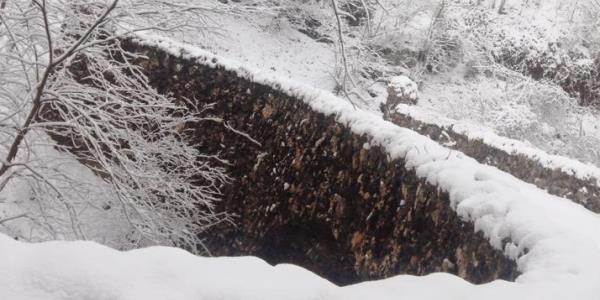
Tufa under snow.
11. Latch a love lock and throw away the key
Make a statement with your sweetie by adding your own lock to the Schenley Bridge and throwing away the key — just as you do it in the proper waste receptacle. (Forgetting the combination also acceptable.)
12. Tour the neighborhood, visit parkside cultural establishments
While you’re in the neighborhood, drop by the Carnegie Museums, the Frick Pittsburgh, Phipps Conservatory, the National Aviary, the Pittsburgh Zoo and PPG Aquarium, and many other must-see institutions around the parks.
13. Think spring
Send warm thoughts to family, friends, or someone you’re flirting with this Valentine’s Day with the gift of daffodils in the parks. Make a donation of $25, and we’ll plant 50 daffodils in the park of your choice — and send your someone special a personalized e-card to boot. Get started here.
Check back next week for the second half of our park date ideas. Share your inspired date ideas below or through Facebook and Twitter!
XOXO,
The Matchmakers at the Parks Conservancy

